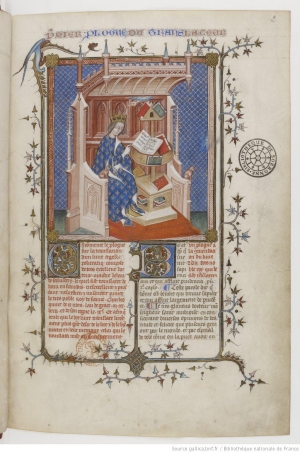What is a library? Is it a collection of books, a suite of digital resources, a space for studying? Where do our current ideas about libraries come from, and where will our new tools take us? Does the library have a future in our information-saturated digital environment?
These questions are at the heart of a spring 2014 undergraduate class, Library/Laboratory, in the Program for Museums & Society. But we know they have a much broader appeal. So, inspired by our very own Brody Learning Commons—designed in response to current student needs—a series of talks linked to the class will examine the past, present, and possible futures of the library. Each speaker in our series will spend an hour with the class, and then, in keeping with the spirit of a learning commons, we’ll open up the classroom to the community for a lecture and conversation. All talks are in the Macksey Room (M-level in the BLC), hours noted below, and are sponsored by the Sheridan Libraries’ Special Collections Research Center.
Please join us!
Tuesday, February 18, 4:30 pm
 We’ll begin with the origins of the national library in the fourteenth-century court of the French king Charles V, who assembled a collection of several thousand texts in French—and yes, this was before the invention of printing with movable type! Many of the manuscripts in the royal library were beautifully illuminated, like this French translation of the Polycraticus of John of Salisbury, an important medieval treatise on politics, with a frontispiece portrait of the king himself immersed in a book.
We’ll begin with the origins of the national library in the fourteenth-century court of the French king Charles V, who assembled a collection of several thousand texts in French—and yes, this was before the invention of printing with movable type! Many of the manuscripts in the royal library were beautifully illuminated, like this French translation of the Polycraticus of John of Salisbury, an important medieval treatise on politics, with a frontispiece portrait of the king himself immersed in a book.
Stephen Nichols, James M. Beall Professor Emeritus of French and Humanities, Department of German and Romance Languages and Literatures: “The Library and Government Policy: Charles V Creates the First State Library.”
Tuesday, March 4, 5:30 pm
 Moving forward a couple of centuries, we’ll land squarely in the era of hand-press printing—for a visit with one of its most imaginative patrons, Horace Walpole. Walpole, born into a modern eighteenth-century political family, preferred to investigate the past. With Strawberry Hill, the Gothic Revival mansion he built near London, he created a massive antiquarian monument and filled it with art, books, and ancient objects. He even started a private press in order to publish his own Gothic novel. His is the very model of a private gentleman’s library, a collection that is continuous with the space it inhabits.
Moving forward a couple of centuries, we’ll land squarely in the era of hand-press printing—for a visit with one of its most imaginative patrons, Horace Walpole. Walpole, born into a modern eighteenth-century political family, preferred to investigate the past. With Strawberry Hill, the Gothic Revival mansion he built near London, he created a massive antiquarian monument and filled it with art, books, and ancient objects. He even started a private press in order to publish his own Gothic novel. His is the very model of a private gentleman’s library, a collection that is continuous with the space it inhabits.
Earle Havens, William Kurrelmeyer Curator of Rare Books and Manuscripts and Adjunct Assistant Professor, Department of History: “The Antiquary in His Library: Horace Walpole, ‘Gothic Gloomth,’ and the Ambition of the 18th-Century Gentleman Collector.”
Stay tuned for more information about the final two talks in our series:
Tuesday, April 8, 4:30
Shannon Mattern, Associate Professor, School of Media Studies, The New School: “The Library as Emergent Infrastructure.”
Tuesday, April 22, 4:30
Kari Kraus, Associate Professor, College of Information Studies and Department of English, University of Maryland, College Park: “Bibliocircuitry and the Design of the Alien Everyday.”
Oh, and the quote in the title of this post? That comes from Carl Sagan’s Cosmos: “Books permit us to voyage through time, to tap the wisdom of our ancestors. The library connects us with the insight and knowledge, painfully extracted from Nature, of the greatest minds that ever were, with the best teachers, drawn from the entire planet and from all our history, to instruct us without tiring, and to inspire us to make our own contribution to the collective knowledge of the human species.”
